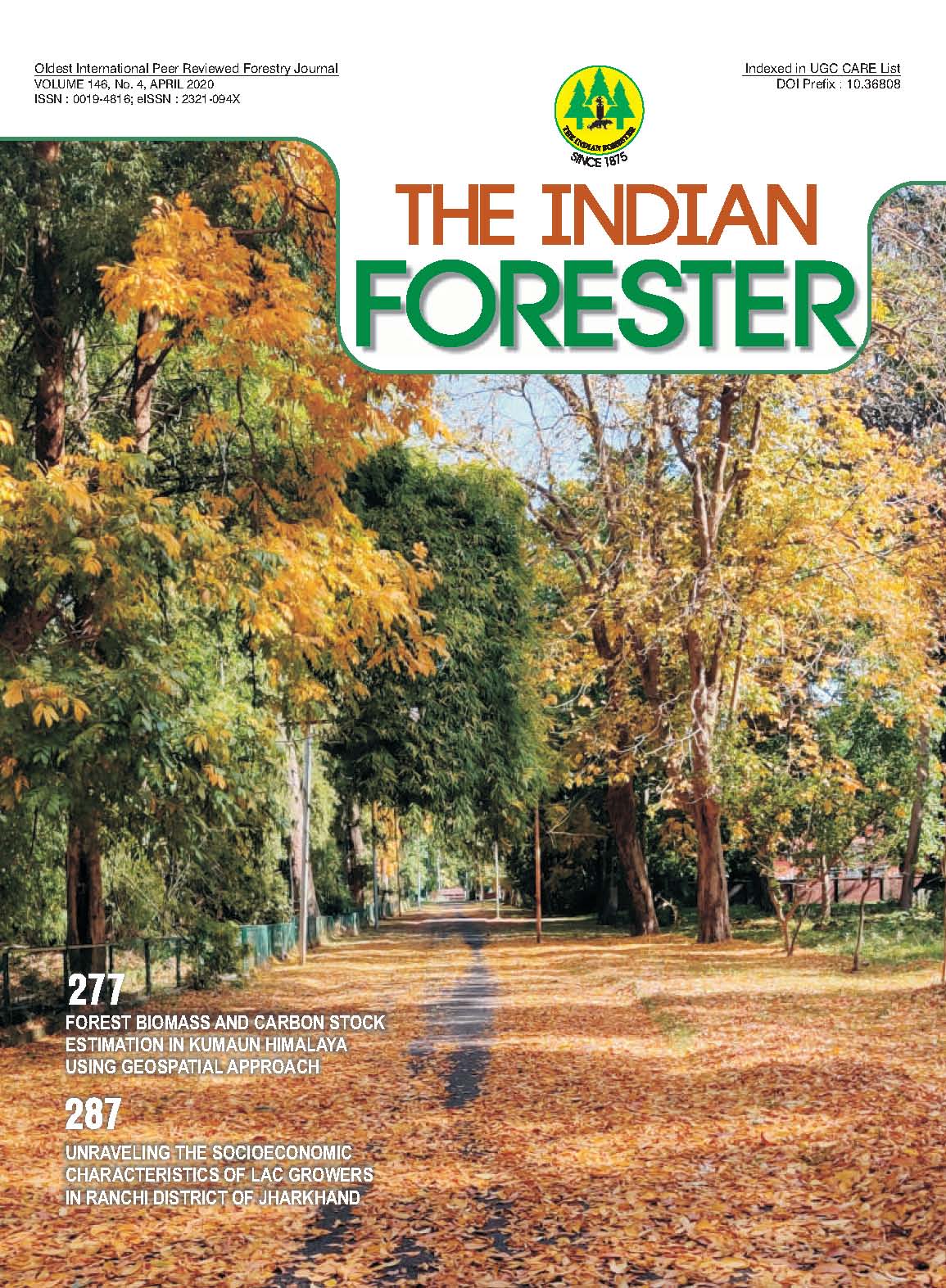Unraveling the Socioeconomic Characteristics of Lac Growers in Ranchi District of Jharkhand
DOI:
https://doi.org/10.36808/if/2020/v146i4/146520Keywords:
Lac Cultivation, Household, Lac Host Trees, Socioeconomic.Abstract
The study based on the structured interview was carried out to analyze the socioeconomic characteristics of the people living in and around the forest areas of Bundu, Namk- urn and Angara blocks of Ranchi district in Jharkhand. The data have been obtained from 90 farmers belonging to six villages using multistage random sampling technique. The households were classified using the sturge* formula depending on the lac host trees available for lac production. The result indicated the prevalence of small and marginal farmers involved mostly in dryland cultivation. The resource endowment in terms of the available host trees for lac cultivation varies from 29 to 80 trees but the utilization pattern varies from 48.27 per cent to 62 per cent across different categories of the household. The educational level was low as most of the family members have completed secondary level; the educational attainment of head of the household was lowest in case of small lac growers and was highest in very large categories. The educational attainment of lac growers justifies the lower level of host utilization pattern across different households. In order to increase the lac production, it is required to increase the utilization pattern among the lac growers in the state which could be increased through providing training and field demonstrations to lac farmers.References
Coleman J., Campbell E., Hobson C, McPartland J., Mood. A., Weinfeld, F. and York, R. (1966). Equality of Educational Opportunity. Washington, DC: U.S. Government Printing Office + 548 pp.
Fryer R. and Levitt S. (2004). Understanding the Black-White Test Score Gap in the First Two Years of School. Review of Economics and Statistics, 86(2): 447-464.
Gol. (2001). Census of India. New Delhi: Ministry of Statistics and Programme Implementation, Central Statistics Office.
Gol. (2011). Census of India. New Delhi: Ministry of Statistics and Programme Implementation, Central Statistics Office.
Gol. (2015). India state of forest report. Dehradun: Ministry of Environment, Forest and Climate change.
Govind P., Bhagat M. and Bhattacharya A. (2009). Lac cultivation as risk coping strategy for agriculture in Jharkhand. Indian Forester, 135(5): 611-617.
Jaiswal A., Sharma K.K. and Kumar K.K. (2006). Importance of lac in the socio-economic life of tribals in Ranchi district, Jharkhand, India. New Agriculturist, 17: 133-137.
Shah H.T., Thomas M. and Bhandari R (2015). Lac Production, Constraints and Management-A Review. International Journal of Current Research, 7(3):13652-13659.
Yogi R, Sharma K.K. and Ramani R. (2016). Model Bankable Projects : Lac Cultivation for Livelihood Security. Bulletin (Technical) No. : 17/2016, ICAR-lndian Institute of Natural Resins and Gums, Ranchi. + 34 pp.
Yogi R, Kumar A. and Singh A.K (2018). Lac Plant Resin and Gum Statistics 2016: At a glance. Bulletin (Technical) no. 19/2018, ICAR-IINRG, Ranchi +80 pp.
Yogi R, Kumar A., Singh A.K. and Kumar N. (2017). Marketing Effeciency of Various Channels for Disposal of Natural Resins in Tribal Areas: A Case Study of Central and North eastern Plateau zones of India. Jharkhand Journal of Development and Management Studies, 15(4): 7475-7492.
Downloads
Downloads
Published
How to Cite
Issue
Section
License
Unless otherwise stated, copyright or similar rights in all materials presented on the site, including graphical images, are owned by Indian Forester.





